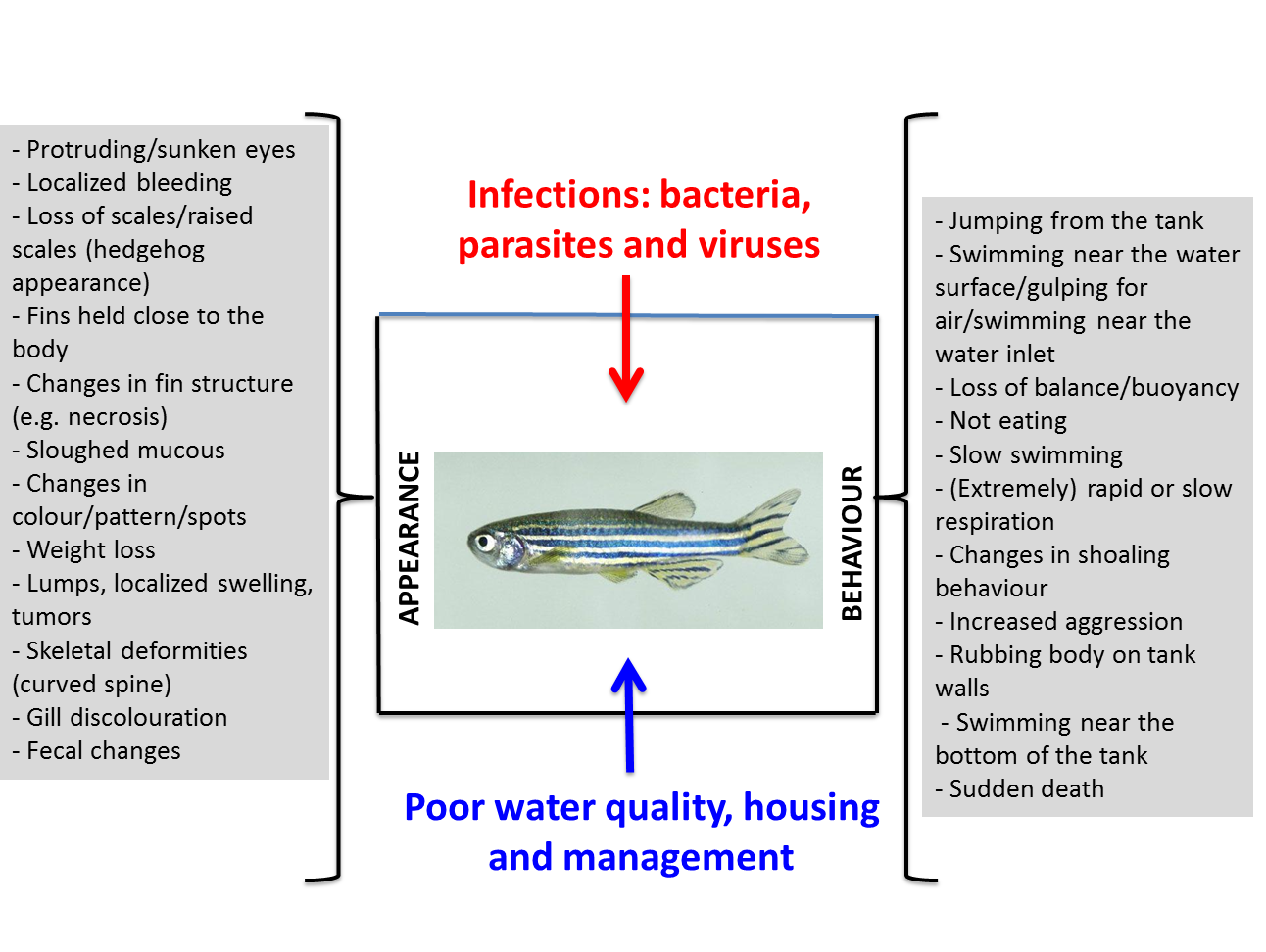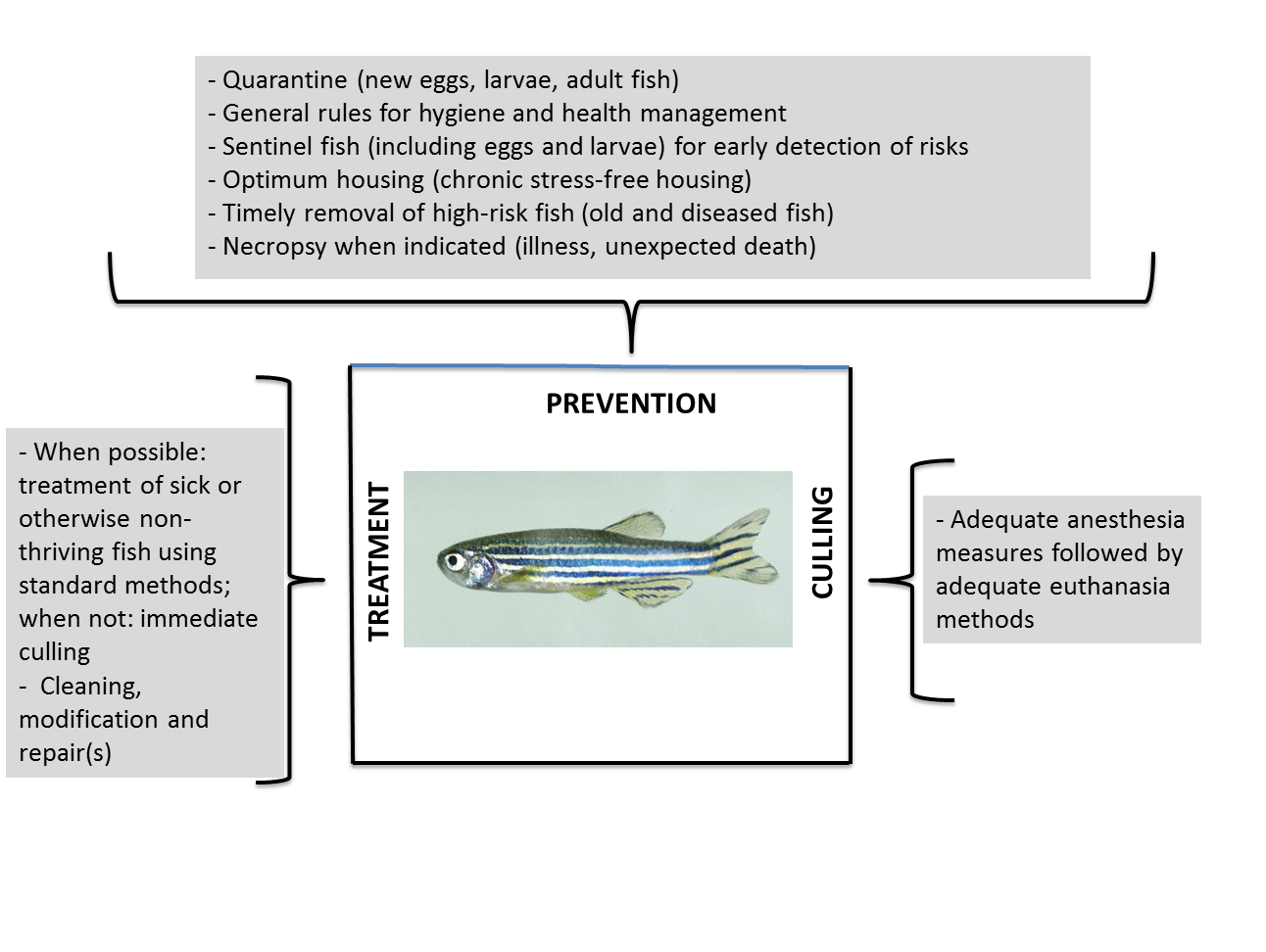The healthy zebrafish
The average lifespan of zebrafish in the wild is about two years, whereas laboratory-held fish can get older. However, laboratory life is associated with a greater risk of welfare and health problems such as deformities (scoliosis, see figure 1) and weight loss (see figure 2).
The health and welfare of zebrafish can be compromised in two ways:
1. by pathogens such as bacteria, parasites and – in rare instances – viruses;
2. by poor water quality, and housing and management issues.
The consequences of such problems are visible as changes in the fish’ appearance (loss of colour, the emergence of red lesions or distinct weight loss), or behavioural changes (lethargy, loss of balance or swimming near the bottom of the tank) and these changes can be measured. Mutants can also develop health and welfareWelfare A complex and dynamic internal state that includes: successful biologic functioning, positive experiences, and absence of negative conditions. The animal adapts effectively to internal needs and external stimuli and maintains a good mental state. problems.
The figure below provides a diagrammatic overview of causes of health and welfare problems in zebrafish and their manifestation in appearance (left) and behaviour (right).

Effective disease prevention and treatment are of the essence for optimal zebrafish husbandry. Below is a diagrammatic overview of the prevention and resolution of health and welfare problems in zebrafish.

Activity
Zebrafish are diurnal animals. At night, they are less active and at rest/asleep, so it is important to maintain a day-night cycle, typically 14 hours of light and 10 hours of darkness (14L:10D). It is best to regulate the light so it slowly fades on and off (mimicking sunrise and sunset) to prevent sudden changes, which can startle fish.

